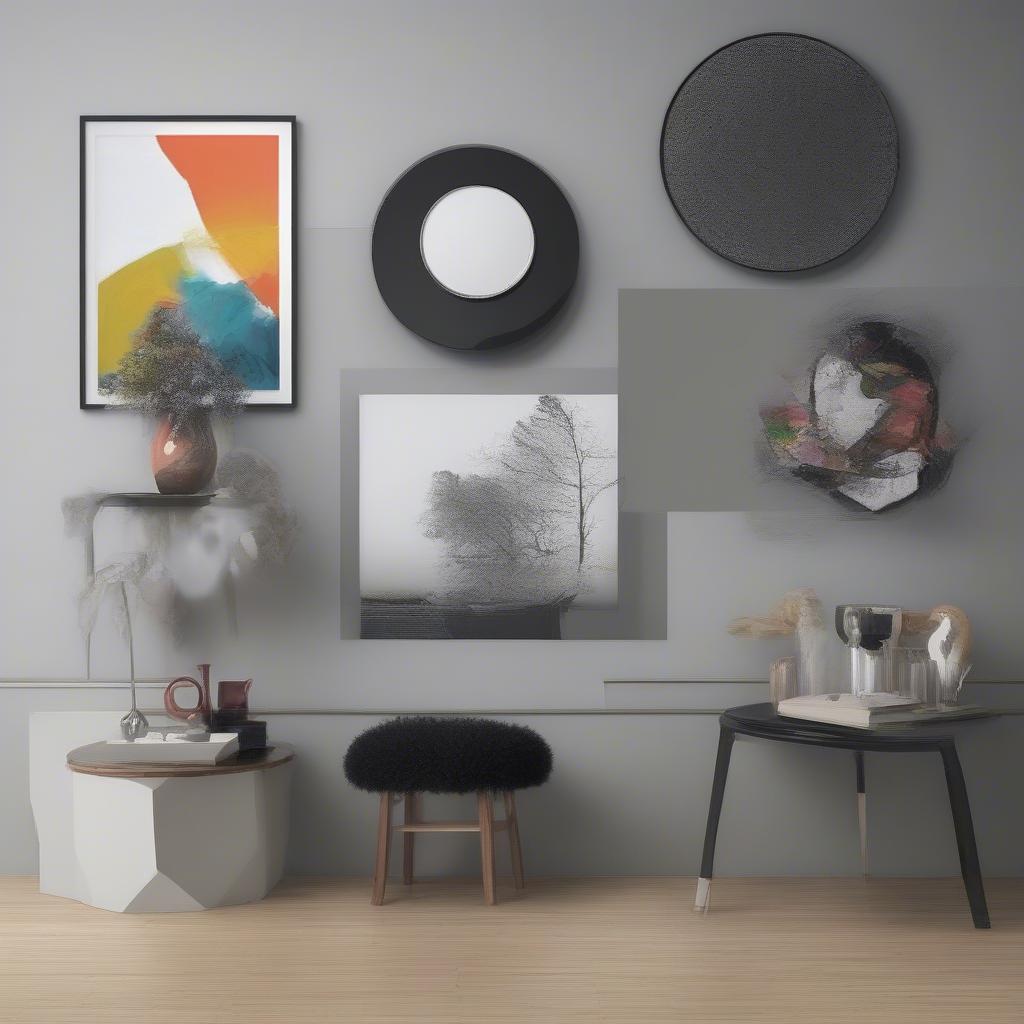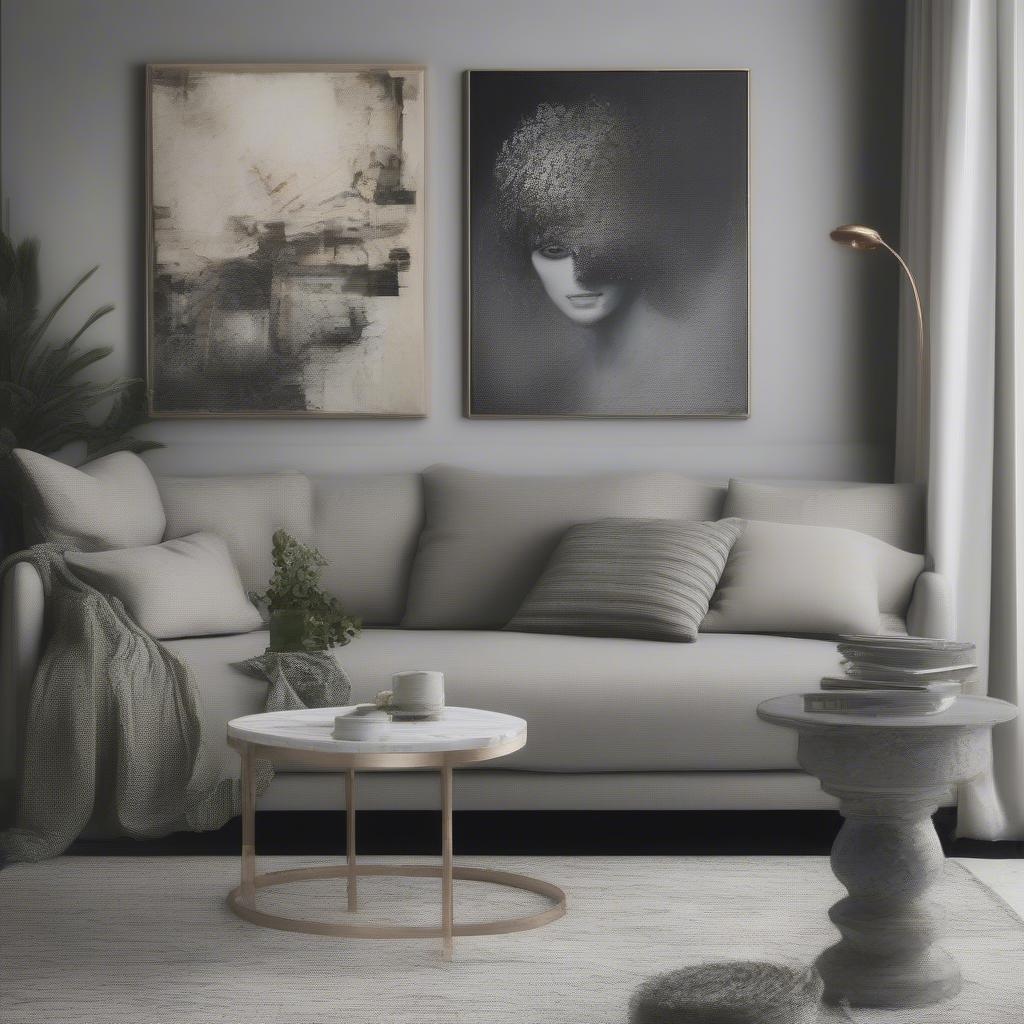
Transforming Your House into a Home with Art
Transforming a house into a home often involves creative expression, and what better way to achieve this than through art. Art can be the focal point of a room or a subtle enhancement that breathes life into spaces. Whether it’s a stunning painting, modern sculptures, or textured wall hangings, integrating art into your home can dramatically influence mood and ambiance. With thoughtful selection and placement, you can curate an art collection that resonates with your personal style while enhancing your interior design.
Understand Your Personal Aesthetic
Before diving into the world of art for your home, it’s vital to understand your personal aesthetic. Identify whether you lean toward modern minimalism, traditional elegance, or rustic charm. Your choice in art should reflect your personality and preferences, allowing your home to feel cohesive and inviting. Spend time visiting galleries, art fairs, and online platforms to explore different styles. As you gather inspiration, consider creating a mood board that encapsulates colors, styles, and themes that appeal to you. This will provide you with a clear direction as you begin selecting pieces for your space.
Creating a Gallery Wall
A gallery wall is an engaging way to display a collection of art pieces, photographs, or even personal memorabilia. This dynamic arrangement can bring a personal touch to a hallway, living room, or stairwell. Begin by choosing a focal point or a large piece that can anchor your gallery. From there, select smaller works that complement it, ensuring to vary the sizes and frames for visual interest. Incorporating space prints and astronomy wall art can add a whimsical touch while echoing your love for the cosmos. Don’t be afraid to include a mix of different media – prints, textiles, and even three-dimensional wall art can create a stunning impact.
Tips for Creating a Gallery Wall
* Choose a focal point or a large piece to anchor your gallery
* Select smaller works that complement the focal point
* Vary the sizes and frames for visual interest
* Include a mix of different media, such as prints, textiles, and three-dimensional wall art
* Don’t be afraid to experiment and try out different arrangements
Strategic Placement of Art Pieces
The placement of artwork significantly influences how spaces feel and flow. When deciding where to hang or display art, take into account the size and scale of both the pieces and the room. Large artworks can serve as striking focal points, while smaller pieces can be grouped for impact. Pay attention to eye level – art should generally be hung at eye level to ensure it captures attention. Consider using easels for floor-standing artworks in areas where wall space is limited or using shelves to create a more dynamic presentation. Art should enhance the surroundings, inviting intrigue without overwhelming the atmosphere.
Tips for Strategic Placement
* Take into account the size and scale of both the pieces and the room
* Hang art at eye level to ensure it captures attention
* Consider using easels for floor-standing artworks in areas where wall space is limited
* Use shelves to create a more dynamic presentation
* Don’t overcrowd the space – leave some breathing room between pieces
Incorporating Functional Art
Art doesn’t have to be purely decorative – it can also serve a functional purpose. Consider investing in pieces that offer both beauty and utility. An intricately designed mirror can double as a statement piece while enhancing light in a room. Sculptural furniture or artistic light fixtures can become conversation-starters while serving necessary functions in your home. By blending creativity with practicality, you not only beautify your space but also ensure it remains livable and functional.
Examples of Functional Art
* Intricately designed mirrors that enhance light and add a touch of elegance
* Sculptural furniture that serves as a conversation-starter and functional piece
* Artistic light fixtures that add ambiance and task lighting
* Textiles and rugs that add color and texture while providing warmth and comfort
Supporting Local Artists
One of the most rewarding aspects of acquiring art for your home is the opportunity to support local artists. By purchasing pieces locally, you help sustain the creative community in your area while bringing unique works into your space. Attend local art shows, join art walks, and engage with artists at community events. This can also provide you with stories and narratives behind each piece, adding more value and resonance to your collection. Plus, local artwork may reflect cultural elements or themes that resonate with your community, creating a deeper emotional connection within your home.
Tips for Supporting Local Artists
* Attend local art shows and art walks to discover new artists and their work
* Join community events and engage with artists to learn more about their process and inspiration
* Consider purchasing pieces directly from local artists or through local galleries
* Support local art initiatives and programs that promote creativity and community engagement
Creating Art Displays for Kids
When designing your home, don’t forget about the little ones! Including children’s artwork in your decor can foster creativity and make them feel proud of their creations. Designate a specific area, like a playroom or a section of the hallway, where kids can display their masterpieces. This not only personalizes your space but also encourages their artistic talents. Create a rotating gallery to showcase their latest art, utilizing clipboards or frames that allow for easy swaps.
Tips for Creating an Art Display for Kids
* Designate a specific area for kids’ artwork and make it easily accessible
* Use clipboards or frames that allow for easy swaps and updating
* Consider creating a rotating gallery to showcase their latest art
* Encourage kids to get creative and express themselves through art
* Make it fun and engaging – use bright colors and playful display options
Investing in Quality Over Quantity
While it may be tempting to fill your space with an abundance of art, focusing on quality over quantity can lead to a more meaningful collection. Investing in a few high-quality pieces can make a bigger impact than a multitude of smaller, less significant works. When selecting art, consider the craftsmanship, materials, and the reputation of the artist. Well-crafted pieces can stand the test of time, both aesthetically and morally, making them treasures that can be enjoyed for years to come.
Tips for Investing in Quality Art
* Consider the craftsmanship, materials, and reputation of the artist
* Invest in a few high-quality pieces that make a big impact
* Don’t compromise on quality – it’s better to have fewer, well-crafted pieces
* Think about the long-term value and enjoyment of the piece
* Don’t be afraid to invest in art that speaks to you and reflects your personal style.
Conclusion
Incorporating art into your home design is a fantastic way to personalize your living space and make a statement. By understanding your aesthetic, creating a gallery wall, and strategically placing art, you can curate a beautiful collection that reflects your personality. Embracing functional art, supporting local artists, and considering the impacts of seasonal changes can keep your design fresh and engaging. Finally, focus on quality pieces that resonate with you, ensuring your home remains a haven of creativity and inspiration. What is the main purpose of incorporating art into a home?
What is the main purpose of incorporating art into a home?
The main purpose is to personalize the living space and make a statement, reflecting your personality and enhancing the ambiance.
How can I understand my personal aesthetic?
Identify your preferences by visiting galleries, art fairs, and online platforms, and creating a mood board of colors, styles, and themes.
What is a gallery wall and how can I create one?
A gallery wall is a dynamic arrangement of art pieces, photographs, and memorabilia. Start by choosing a focal point, select complementing smaller works, vary sizes and frames, and include different media.
What tips are provided for creating a gallery wall?
Choose a focal point, select smaller works, vary sizes and frames, include a mix of media, and experiment with different arrangements.
How does the placement of art pieces affect the space?
The placement of art significantly influences how spaces feel and flow. Consider size, scale, eye level, and utilize appropriate display methods to enhance the surroundings.
What are tips for strategic placement of art?
Consider size and scale, hang art at eye level, use easels or shelves for dynamic presentations, and avoid overcrowding the space.
What is functional art?
Functional art serves both beauty and utility, such as an intricately designed mirror that adds elegance and enhances light, or artistic light fixtures that offer ambiance and task lighting.
What examples of functional art are mentioned?
Examples include intricately designed mirrors, sculptural furniture, artistic light fixtures, and textiles that add color and texture.
Why should one support local artists?
Supporting local artists helps sustain your community’s creative scene, brings unique works into your space, and can reflect local culture and themes.
What tips are provided for supporting local artists?
Attend local shows, join community events, consider purchasing from local artists or galleries, and support local art initiatives.
How can I create an art display for kids?
Designate a specific area for their artwork, use clipboards or easy-to-update frames, create a rotating gallery, encourage creativity, and make it engaging with bright colors and playful displays.
What tips are given for creating an art display for kids?
Designate accessible areas, use easy-to-update frames, create a rotating gallery, encourage creativity, and make displays fun and engaging.
Why is focusing on quality over quantity better when investing in art?
Focusing on quality ensures a meaningful collection with pieces that stand the test of time, are well-crafted, and reflect your personal style.
What tips are provided for investing in quality art?
Consider craftsmanship, materials, and artist reputation, invest in a few high-quality pieces, prioritize quality over quantity, and focus on long-term value and enjoyment.